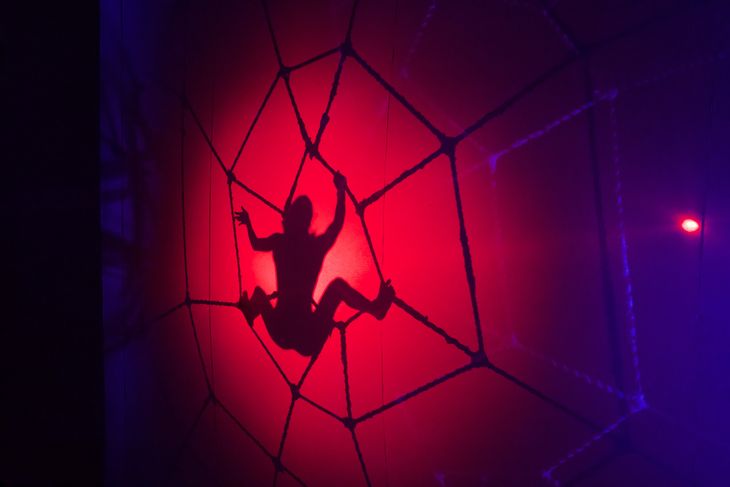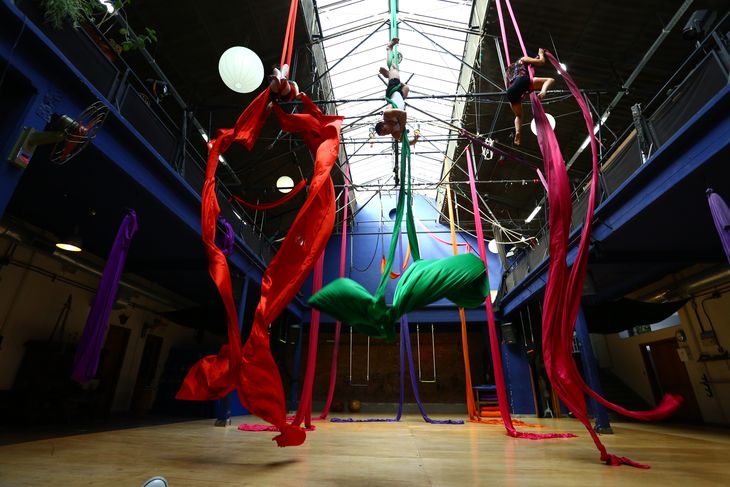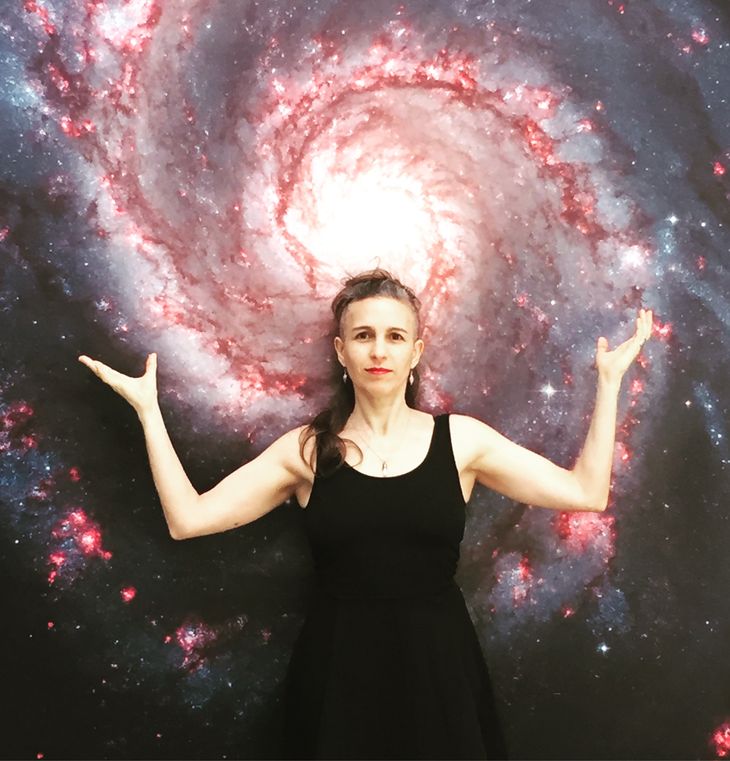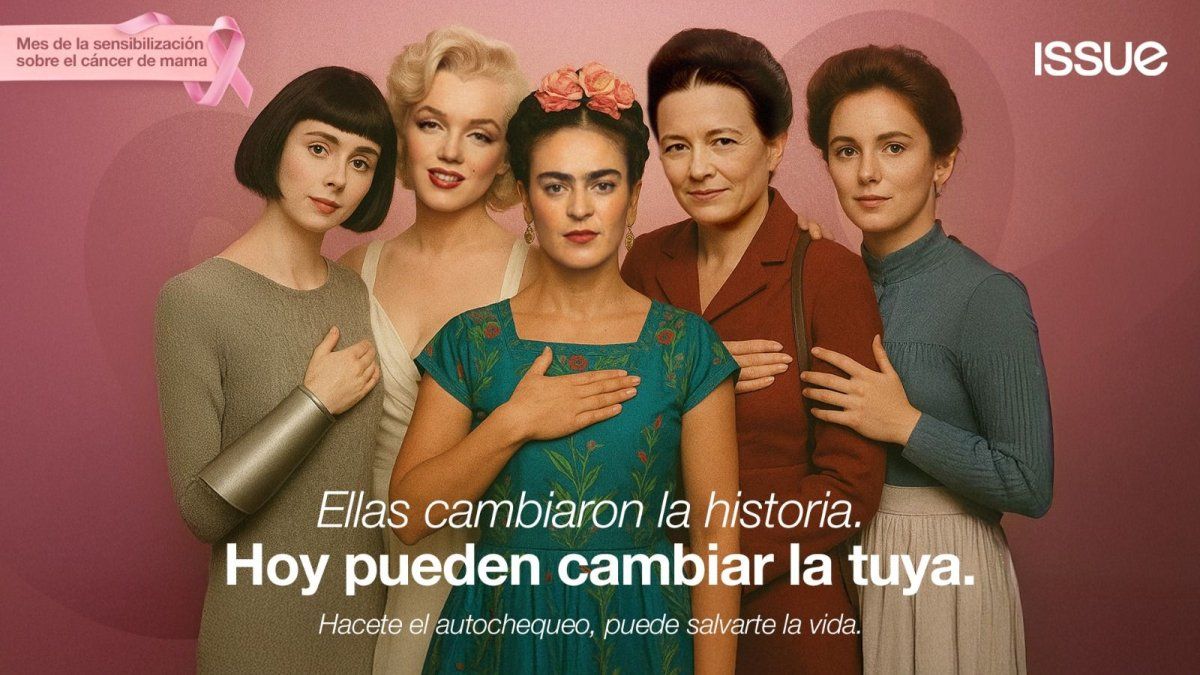“I wanted to talk about the weight of being a woman. In the first scene there is a spider web with five women and a man who laughs at them. It is an acrobatics and circus show that prioritizes visual beauty,” says Mariana Sanchez, Founder of the Trapeze Club, one of the most important contemporary circus arts schools in Latin America, which is celebrating its 20th anniversary.
To celebrate it, it was re-released “Ceremony, black circus”, which delves into women, time, destiny, life and death. It combines contemporary circus with yoga, while a photography exhibition with the history of the space opens. The performances are on Saturdays and Sundays at the Club de los Trapecistas, Ferrari 252. We spoke with Mariana Sanchez.
Journalist: How did you manage to sustain yourself for 20 years as a space for experimentation, training and circus theatre?
Mariana Sanchez: It is a synergy, there are times when the classroom supports the school and other times, the school supports the classroom. There has been a big difference since we were authorized and began to receive subsidies from Proteatro or the INT as a classroom, there we were able to make building improvements, expensive electrical works and tuning. There are 3 legs, I am the director of the school, programmer and director of “Circo negro”; which attracts people when it has performances. Now the school is the pillar of support, more than the classroom, because the profit without government support is diluted when a drum breaks. All the profit for three months goes into repairs. It is a handcrafted, hard work, and for it to work it is a cooperative work in the sense that we work as a community. The teachers come to do photo sessions, repair elements, it is not an individual project, that is where the strength lies.
SEA_UNIVERSE.jpg
Mariana Sánchez, founder of the Trapeze Club and director of the show.
Q: Why did you create a work about the female universe? What themes does it address?
MS: There is a backstory. The first 15 years of the company we worked with Teresa Ciarla, a lyrical singer who always sang, did technique, repaired costumes, and died. She was a fundamental pillar and since she left I never did “Circo negro” again, I closed the door. The pandemic happened, my oldest daughter who is an acrobat told me how unfair it was that when she was already ready to do a show I didn’t put anything on. So I revived a piece where I wanted to talk about death, women, around Tere, who was unable to have children or a partner and was on the edge to end up falling. Women who are unable to display their fullness from the feminine. I sought to show the strength of the feminine in the group and we also revive other numbers. This ceremony is like a closing, the men who were there like my ex-partner or Adrián, who did the graphics for us and also died, leave and we are all women, a paradigm shift is coming.
Q: Do you continue to follow the line of your previous works?
MS: Yes, like it was Black Circus, with black light, white curtain, bodies and silhouettes, a lot of visual force and power from the image and the sensorial. I put on all the works with my very young daughters always hovering around, so the shows never had a density of fear, discomfort, there was always joy, empathy, lightness, it has to do with something personal, my daughters watched and I wanted them to like it, I had to include them. When they were little I trained as a Waldorf teacher, which has something of the importance of the image in the imaginary of the evolutionary stages, that marked a course.
Q: What can you say about the opening of the photography gallery?
MS: This work, against all odds, returns, so it accompanies a retrospective of how we found the place after ten years and now, it is the same image at the beginning, ten years ago and now twenty years ago, there was a valorization of this whole journey, very hard work and artisanal, with people who want the space to exist. Everyone collaborates, teachers, the public, they feel this place as a sanctuary that belongs to them, as a refuge to which you can return, as a neighborhood club, families who accompany each other and see their children grow, people who saw the work as children and return. This is an artistic cultural project, the decisions have that priority, otherwise I would rent it out for commercial sessions.
telara_sombra.jpeg

The first scene of “Ceremony, Black Circus”.
Q: What other particular features does the space have?
MS: We take training as medicine, as part of health, whoever wants to can come and do acrobatics, have their end-of-year show, it is a space for personal expression, that part is medicinal and will be needed more and more. During the pandemic, I set up the online school via Zoom, as a support, and the students would meet up and then stay to chat. We are a space of resistance, with the policy of accompanying, whoever cannot pay, has to wait, this is an unjust society and no one deserves to not have. There should be art for everyone, perhaps ours is from a more invisible place, we do not do social work like the people who teach in the slum, we do it with the circus as a tool for transformation.
Q: What place does the circus have in culture?
MS: It is gaining a lot of ground, like the combined arts, in many shows you can also see the circus, the border is difficult. We are fighting for the national circus law, which passed the first instance, and as a collective we are organizing ourselves to ask for Procirco, as there is Proteatro, at some point we will have a drinkable country again. But it is taking its place with a firm step, 10 or 15 years ago you talked about fabric or trapeze and it was unknown, today everyone knows.
CLUB_FABRICS IN MOTION.jpg

The Trapeze Club is both a hall and a school.
Q: How is the public response going in this situation?
MS: It’s hard to sell, you can see that people have exchanged the dollars they had saved and you don’t know what’s coming, these are the first things that are crossed out. We did better in the first season, before you sat down and people came, now you have to move and advertise, and the prices are affordable, at most 9000 pesos with cheaper solidarity tickets. We will distribute flyers and if not, we’ll give it away, we want the room to be full. People come from the park with their mate and dog.
Source: Ambito
I am an author and journalist who has worked in the entertainment industry for over a decade. I currently work as a news editor at a major news website, and my focus is on covering the latest trends in entertainment. I also write occasional pieces for other outlets, and have authored two books about the entertainment industry.




